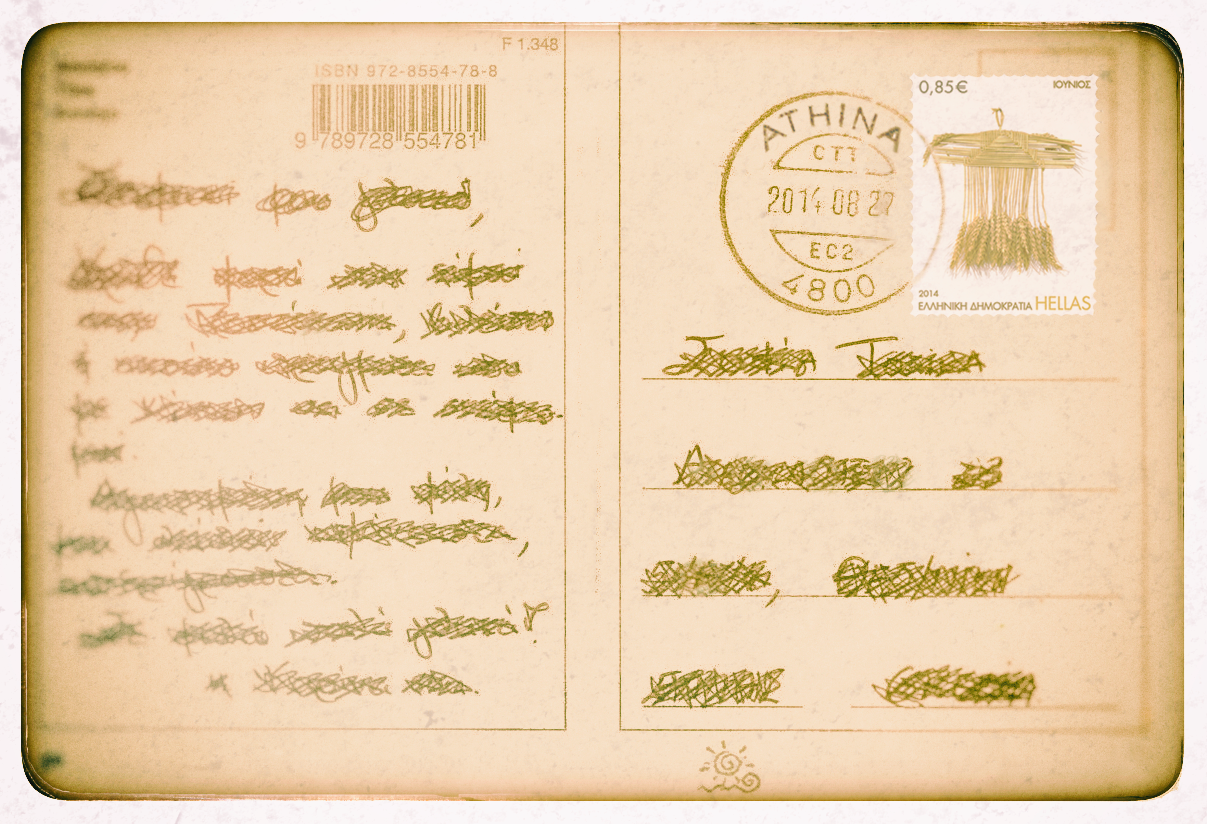



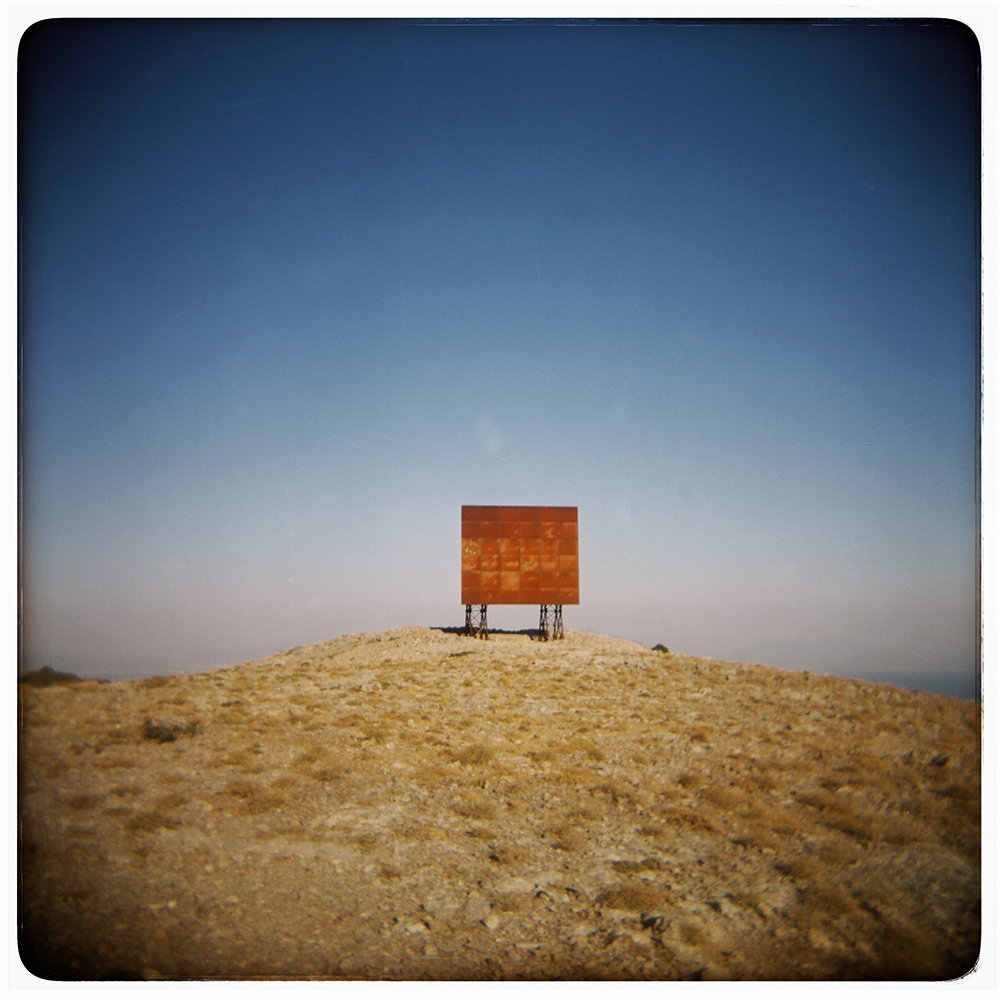

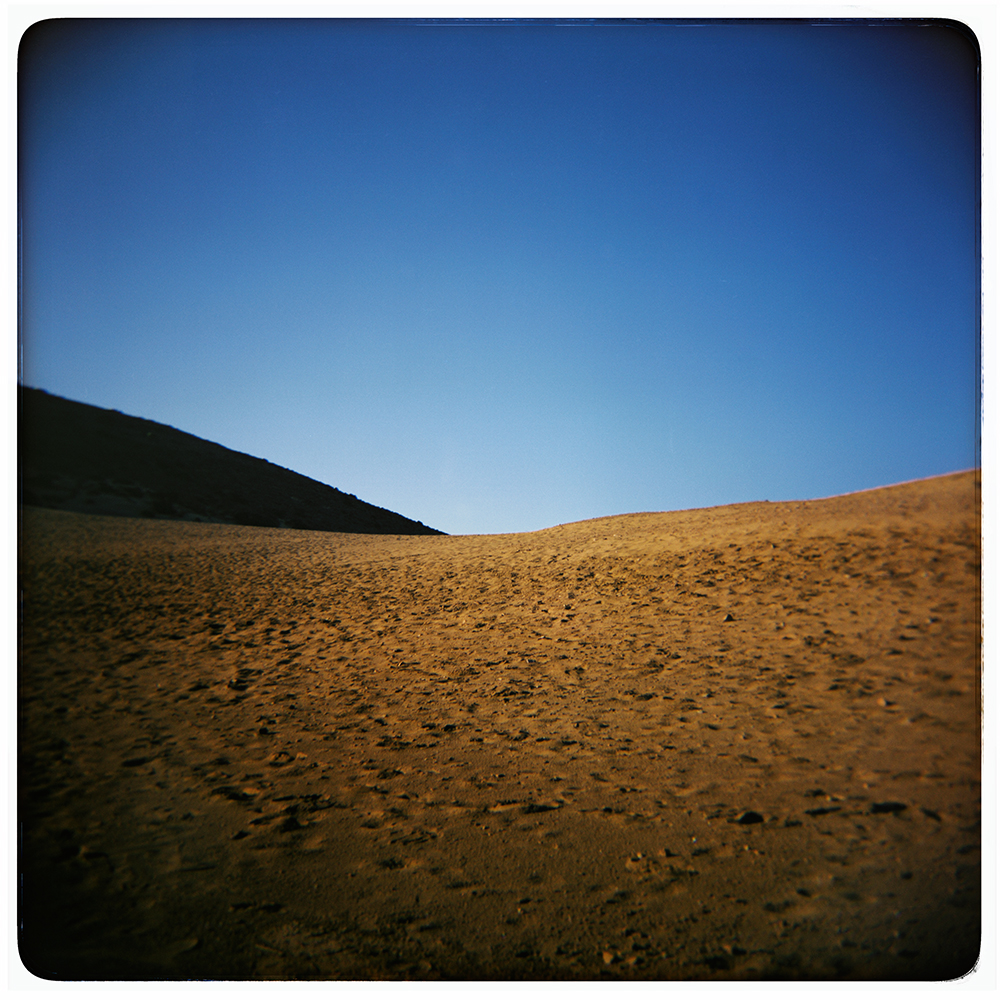

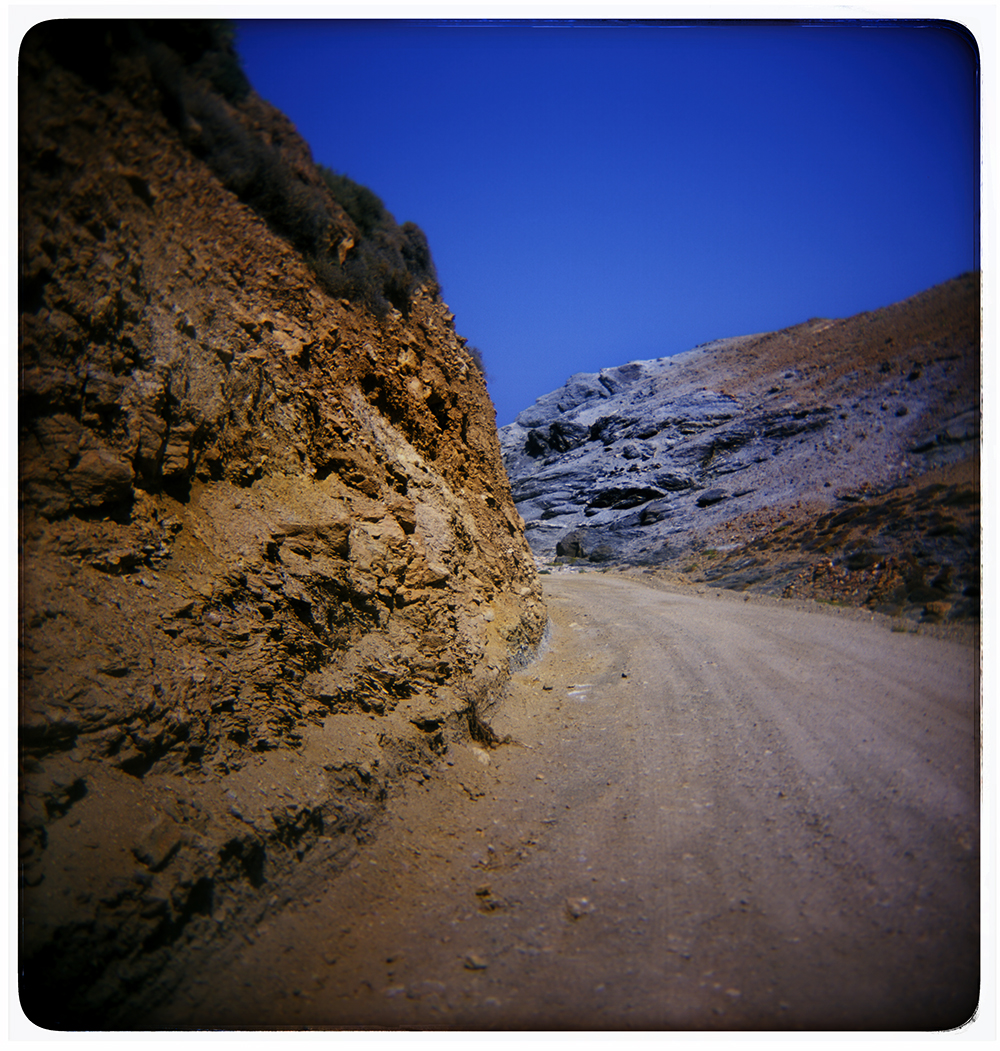

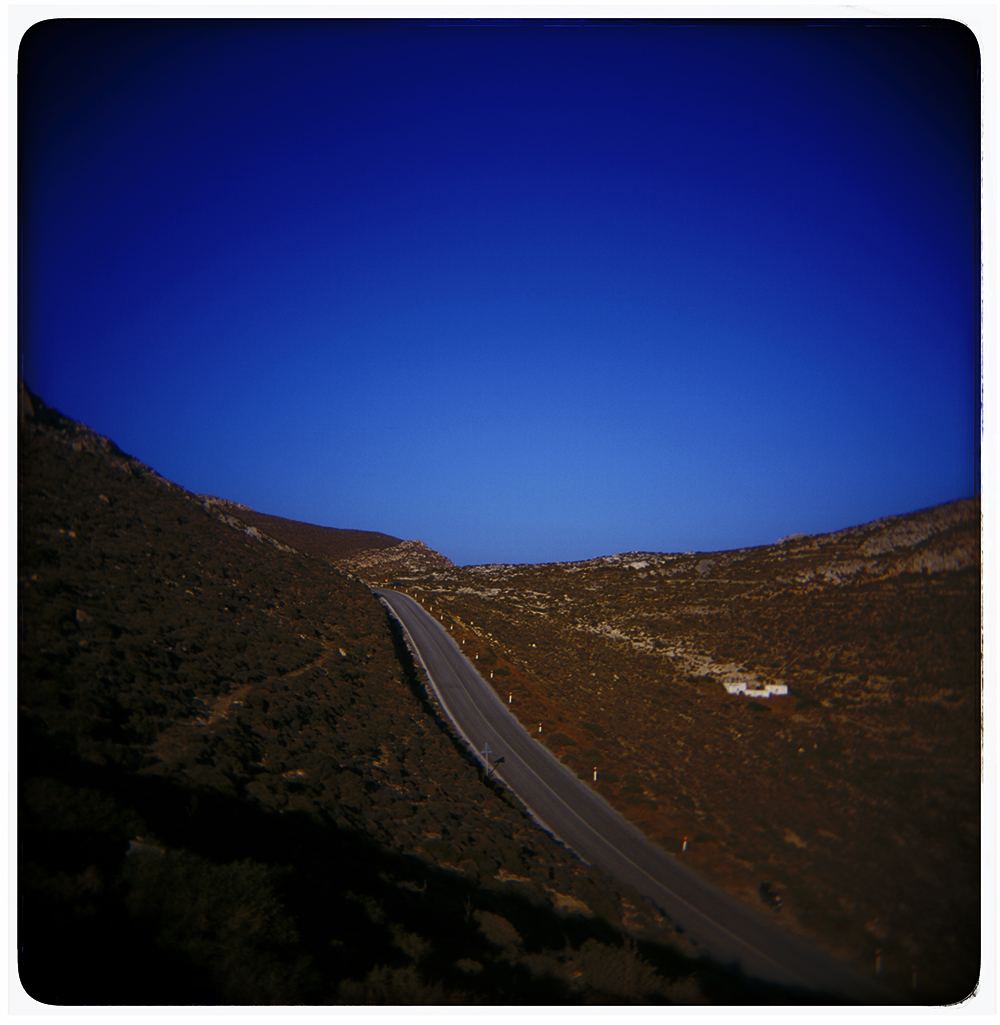

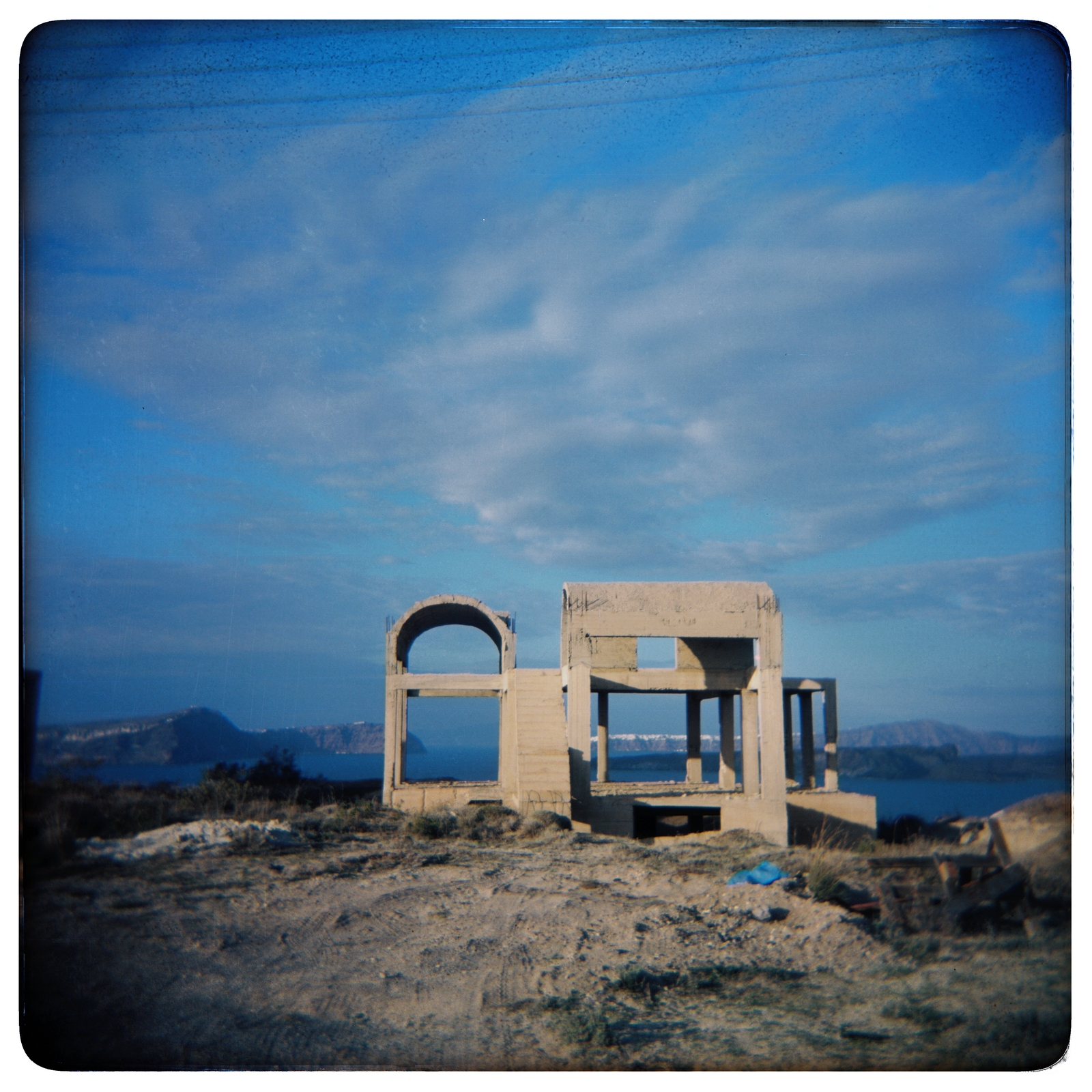

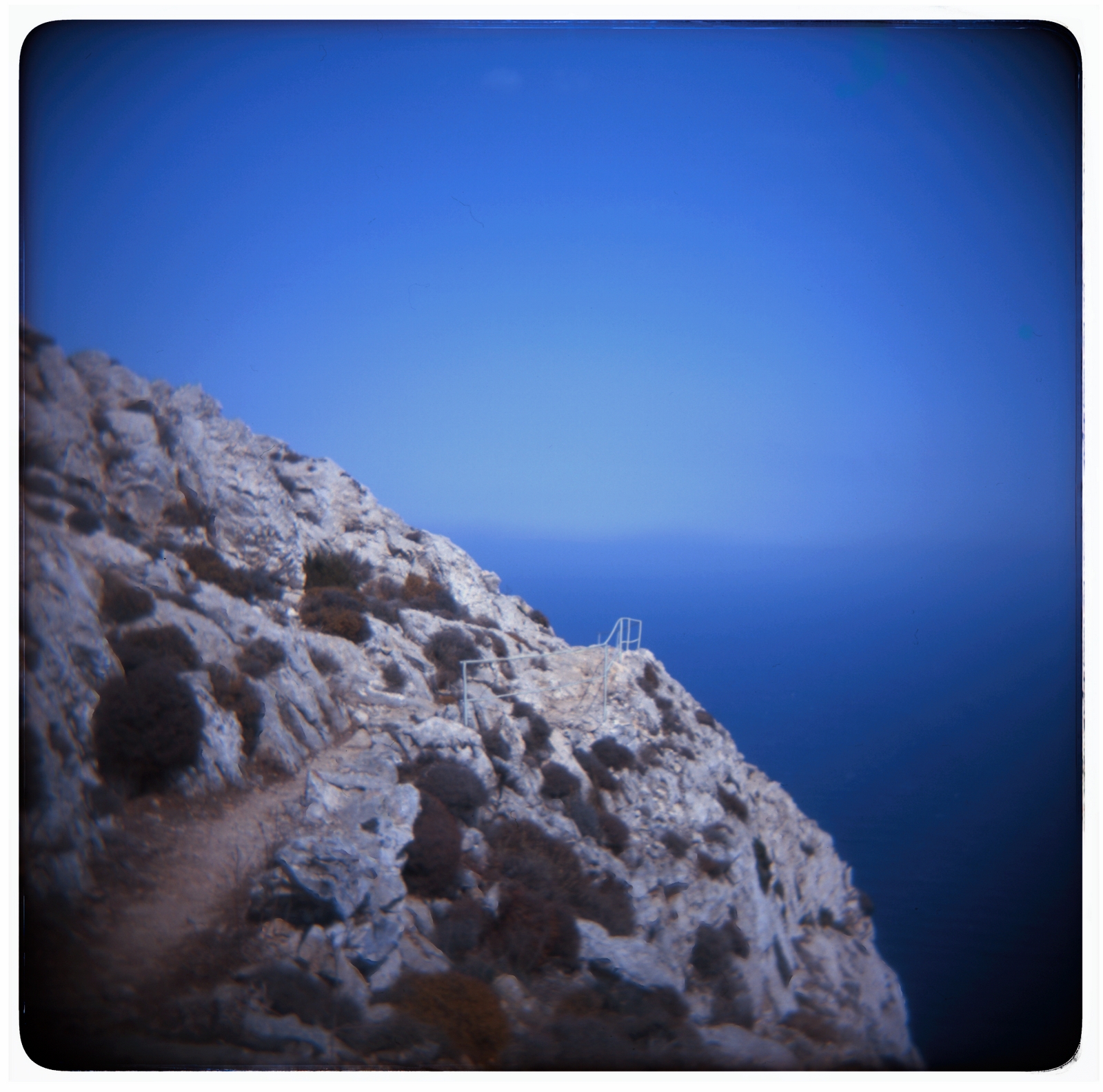

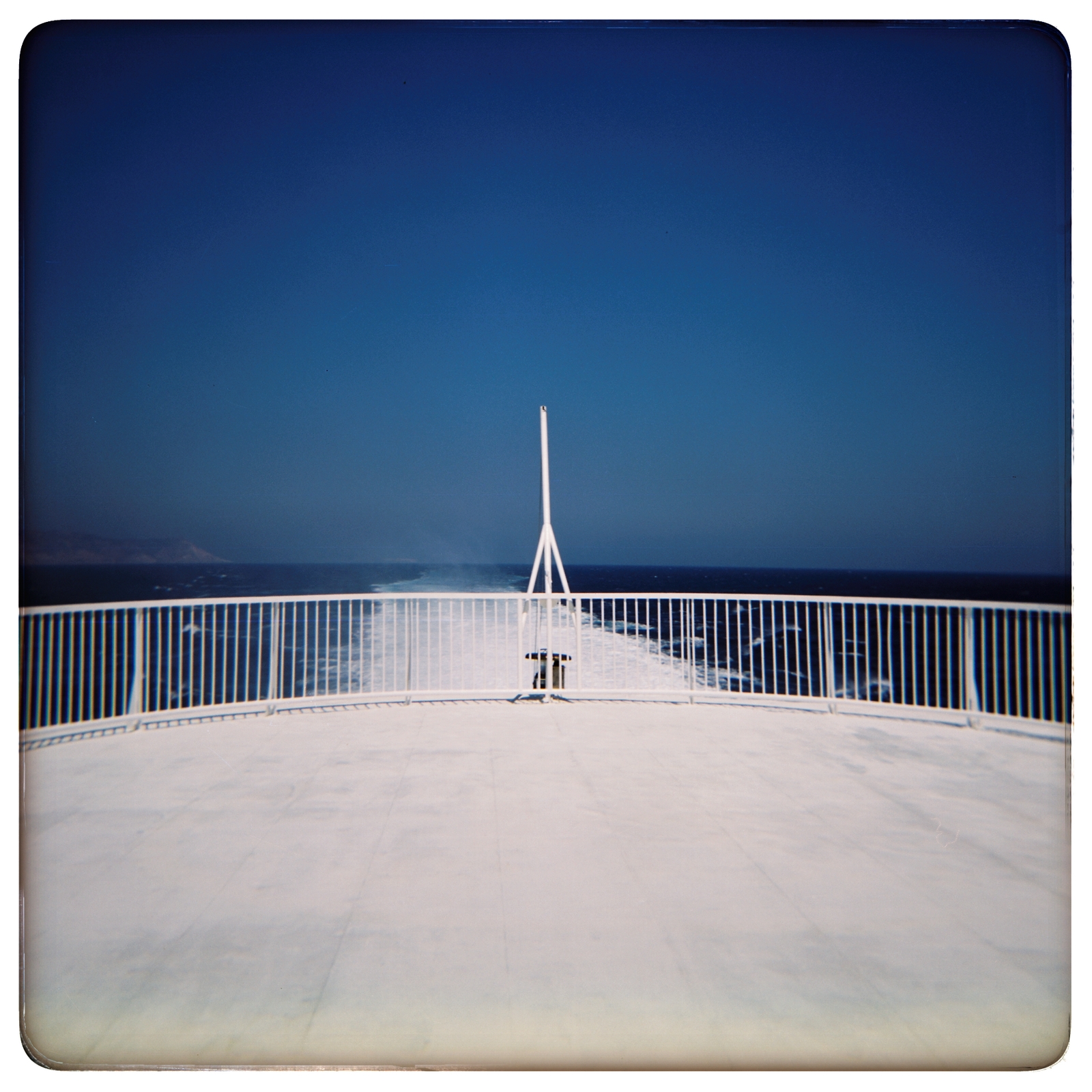

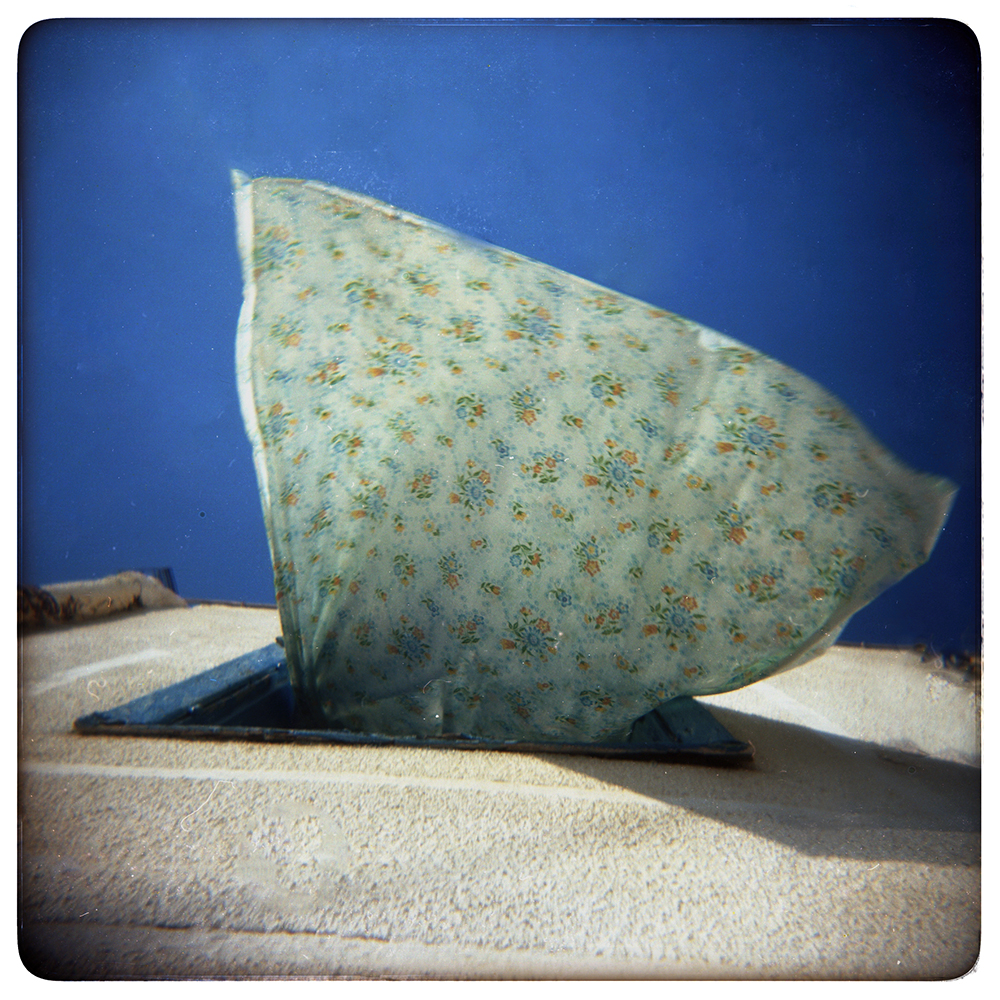

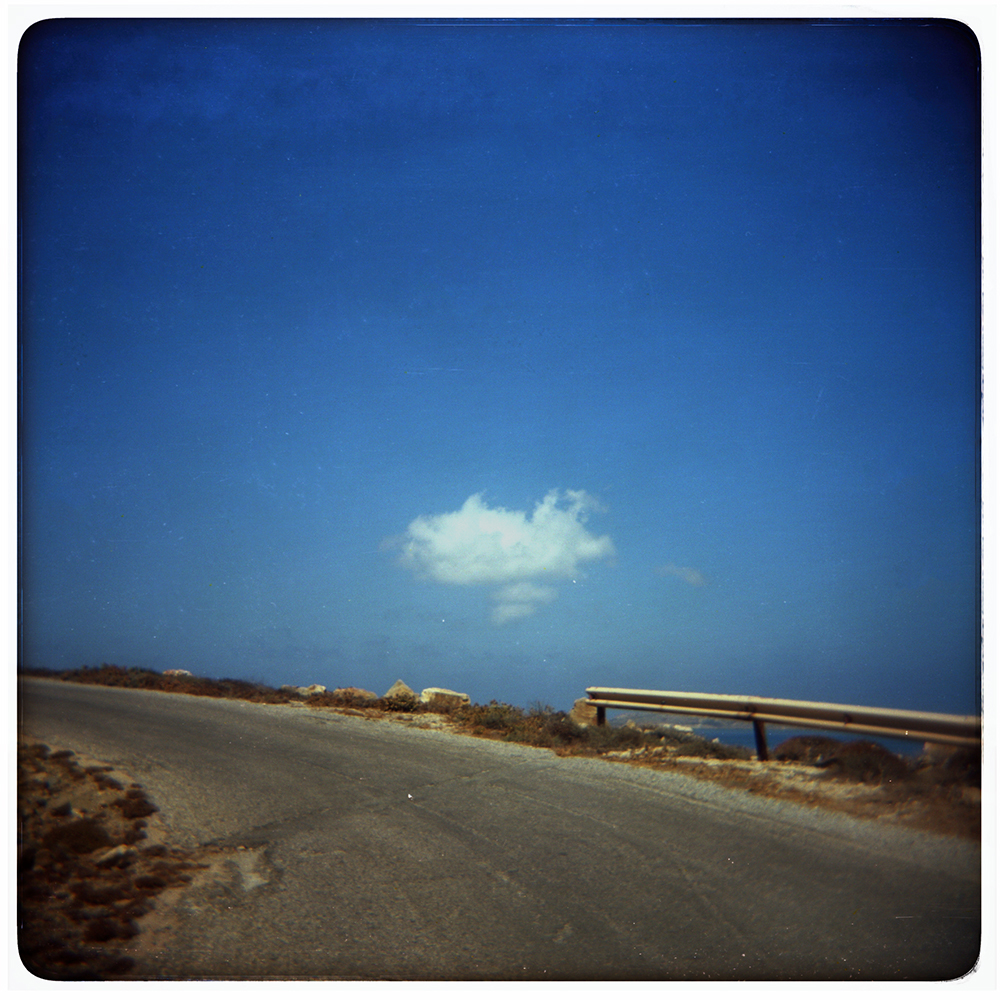

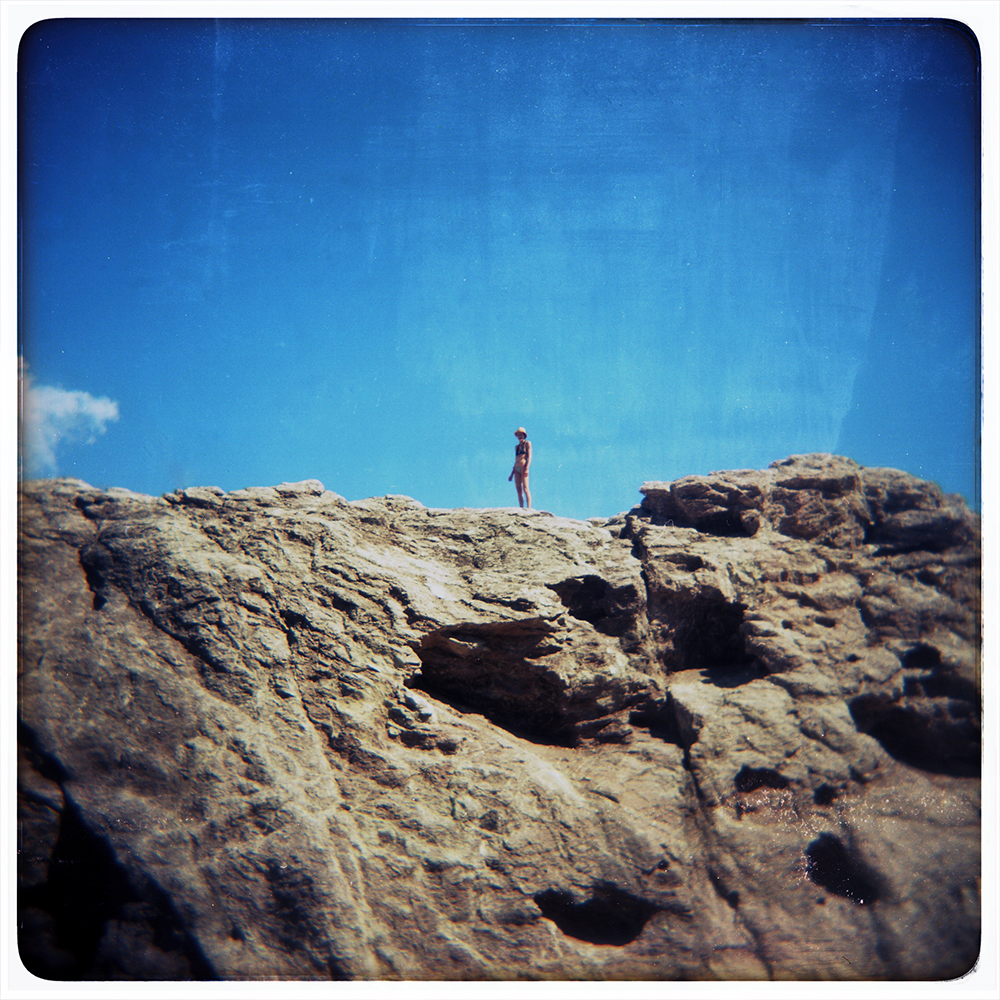

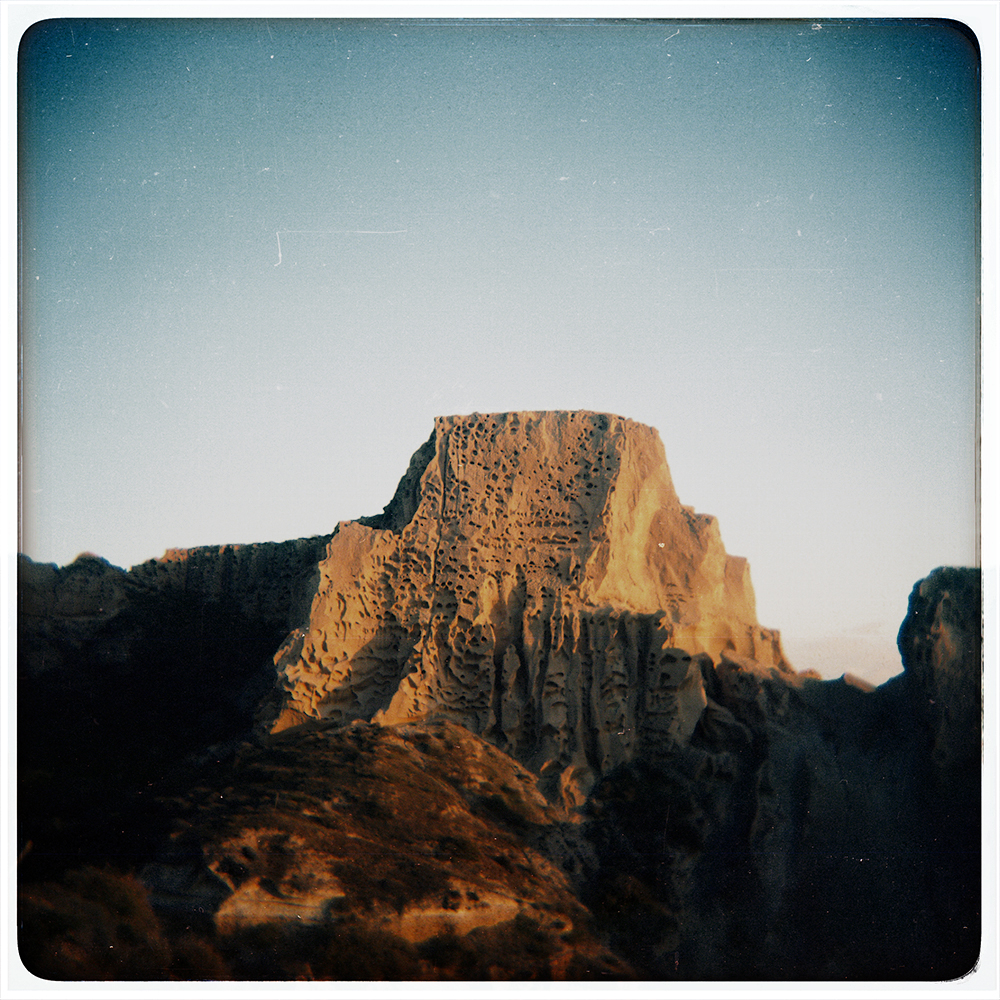

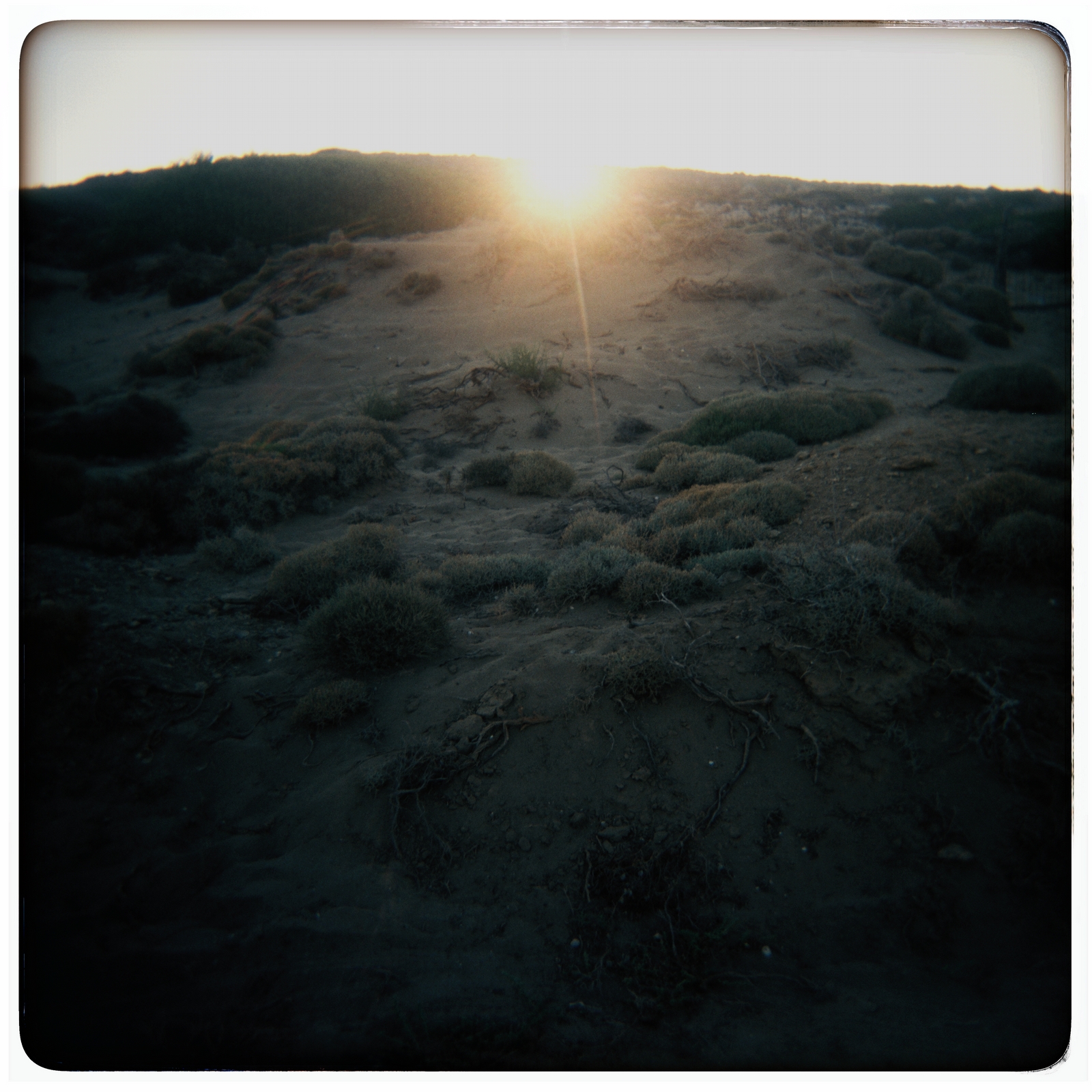

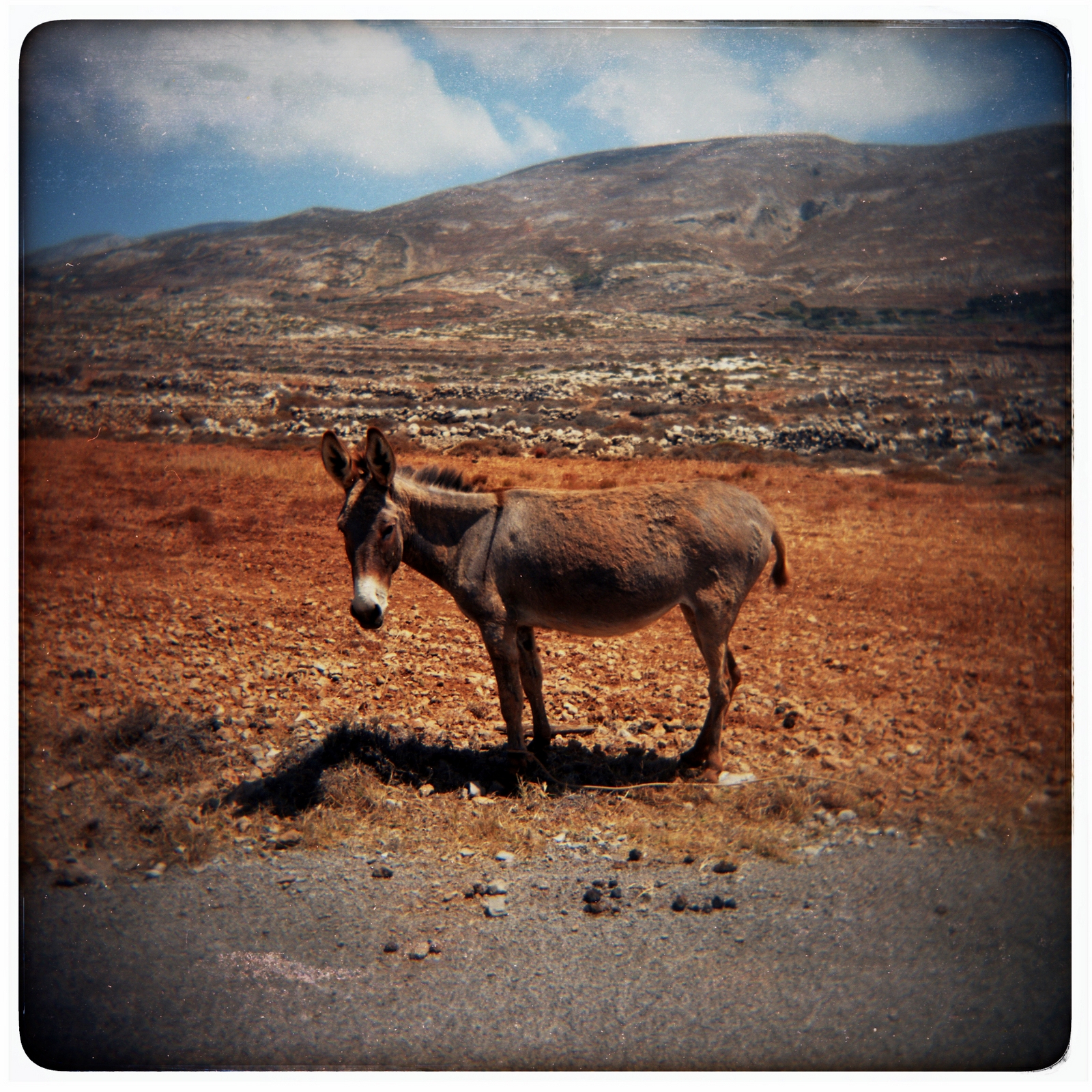

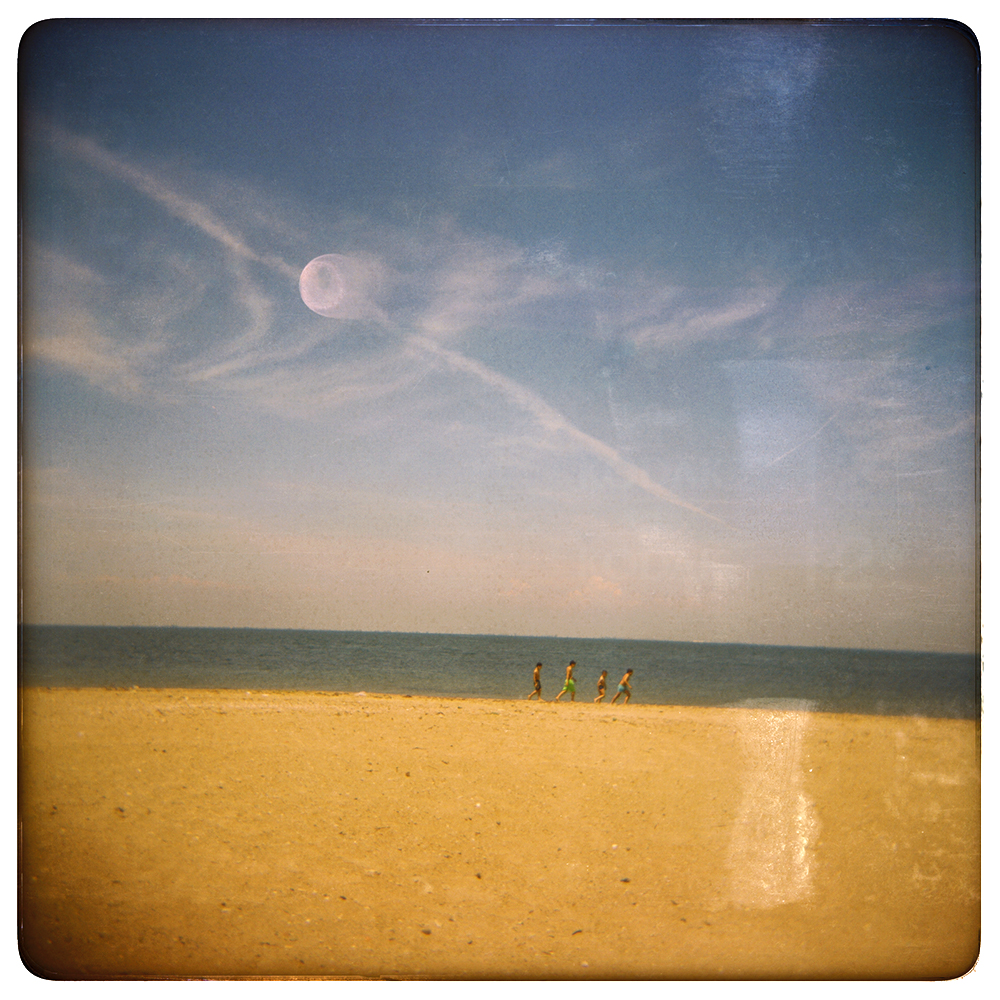

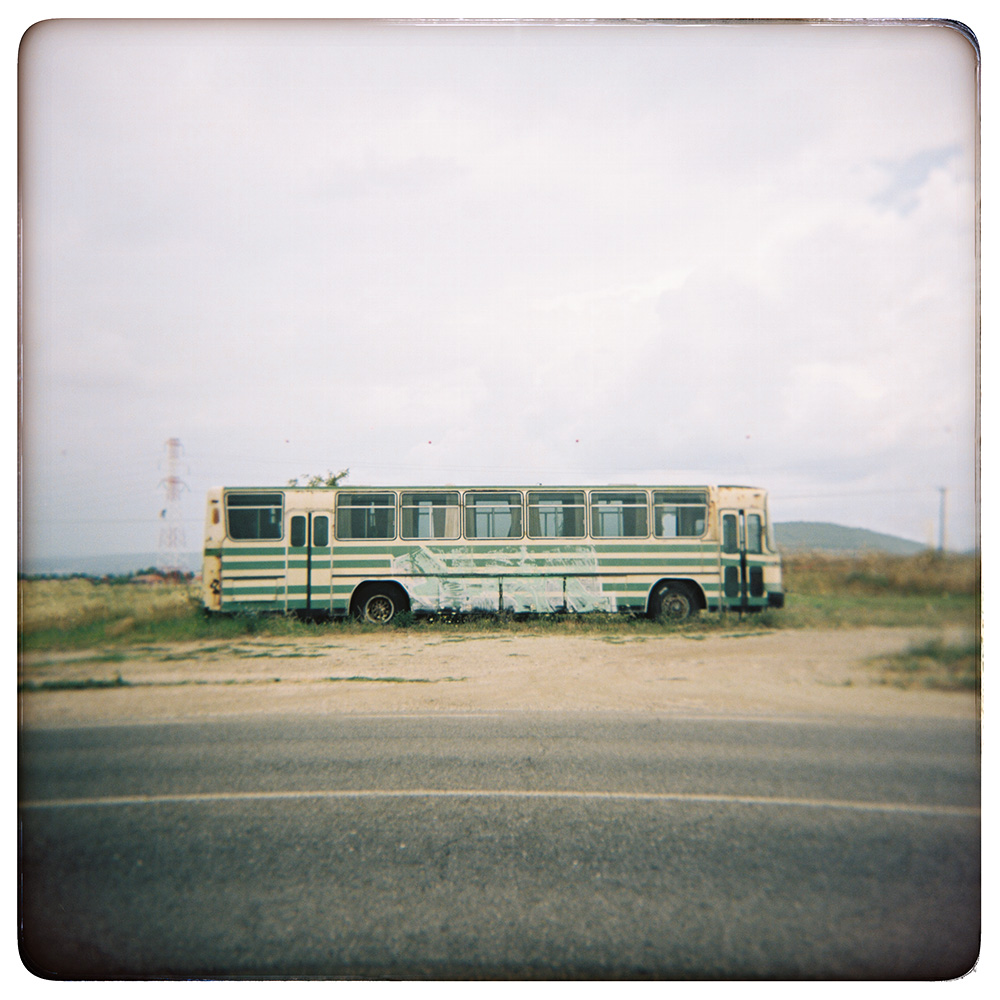

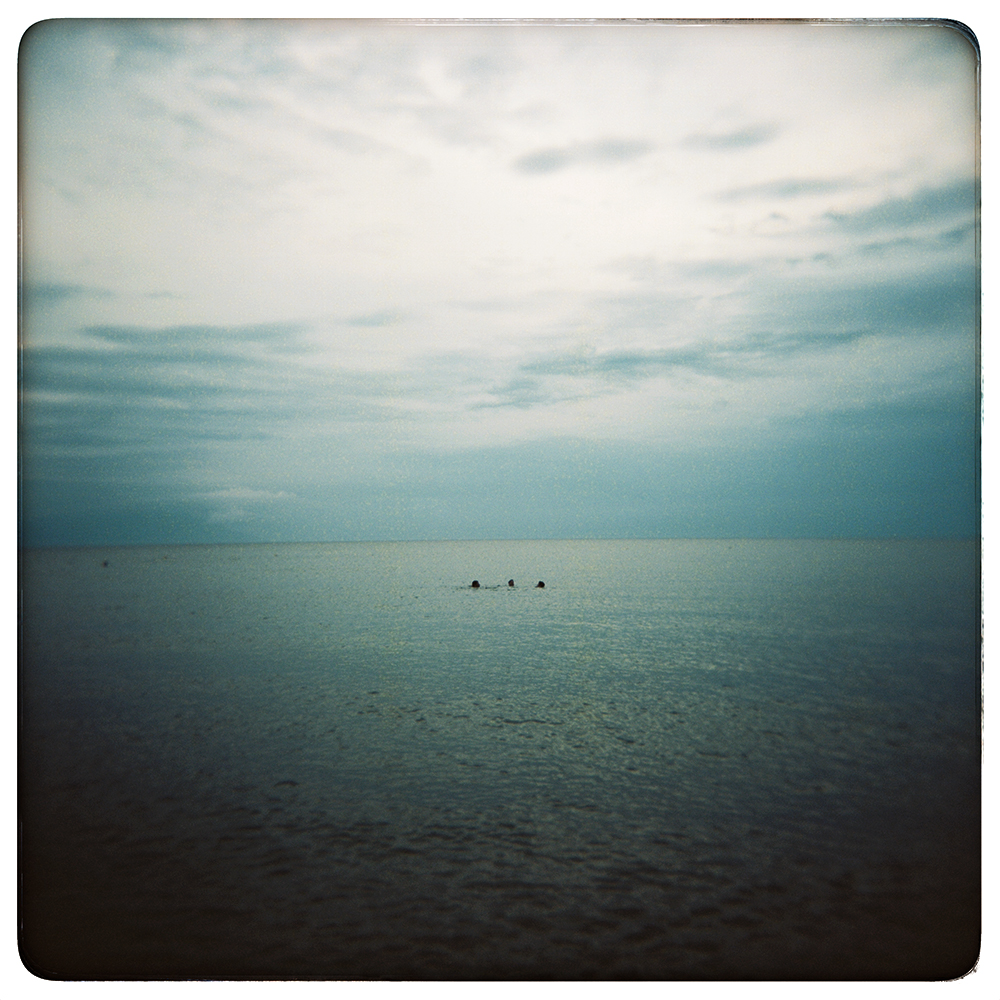



















“Postcards that you would never send” started in 2007 as a form of protest against the sheer amount of images flooding the world of photography following the advent of digital cameras. It consists of pictures from the Greek countryside shot with an inexpensive analogue camera and plastic lens, the process largely determined by film economy and particulars of this type of shooting. They represent images which, had they been sold as postcards, probably no-one would buy and send.
The images constitute an open challenge to what postcards are usually about: the showcasing of the popular and touristic, the must-see attraction to head to once the holiday destination has been reached. Instead of that, a nameless and nondescript place is displayed that could be situated anywhere.
The professional postcard images, picture-perfect with their lucid colours contrast sharply with our flawed examples of altered colours, lens vignetting and light’s unruly hide-and-seek inside the camera box. Here, the defective is welcome and embedded in the images in multiple ways.
Finally, “Postcards that you would never send” is a last stand against the trend of pushing the postcard medium towards extinction, as its function is being taken over by mobile phones and social media. It pays homage to the stubborn romantic who chooses a postcard, pens down a few words to a good friend and posts it.
Note: Similar depictions of Greek landscapes taken on single-use cameras have occurred previously and are detailed in the article by Yannis Stathatos “The Invention of Landscape. Greek Landscape and Greek Photography, 1870-1995” (Camera Obscura, Thessaloniki, 1996).